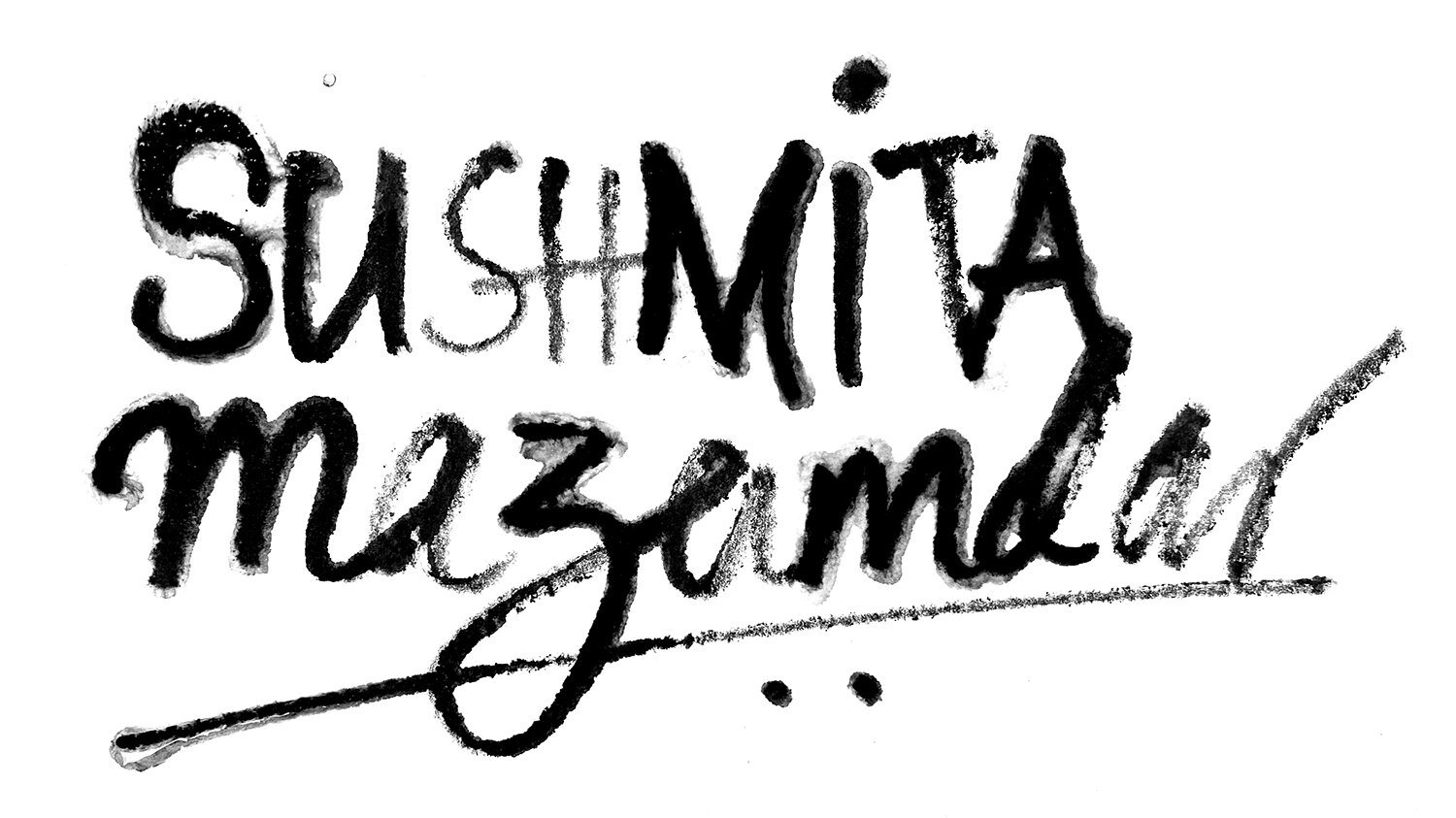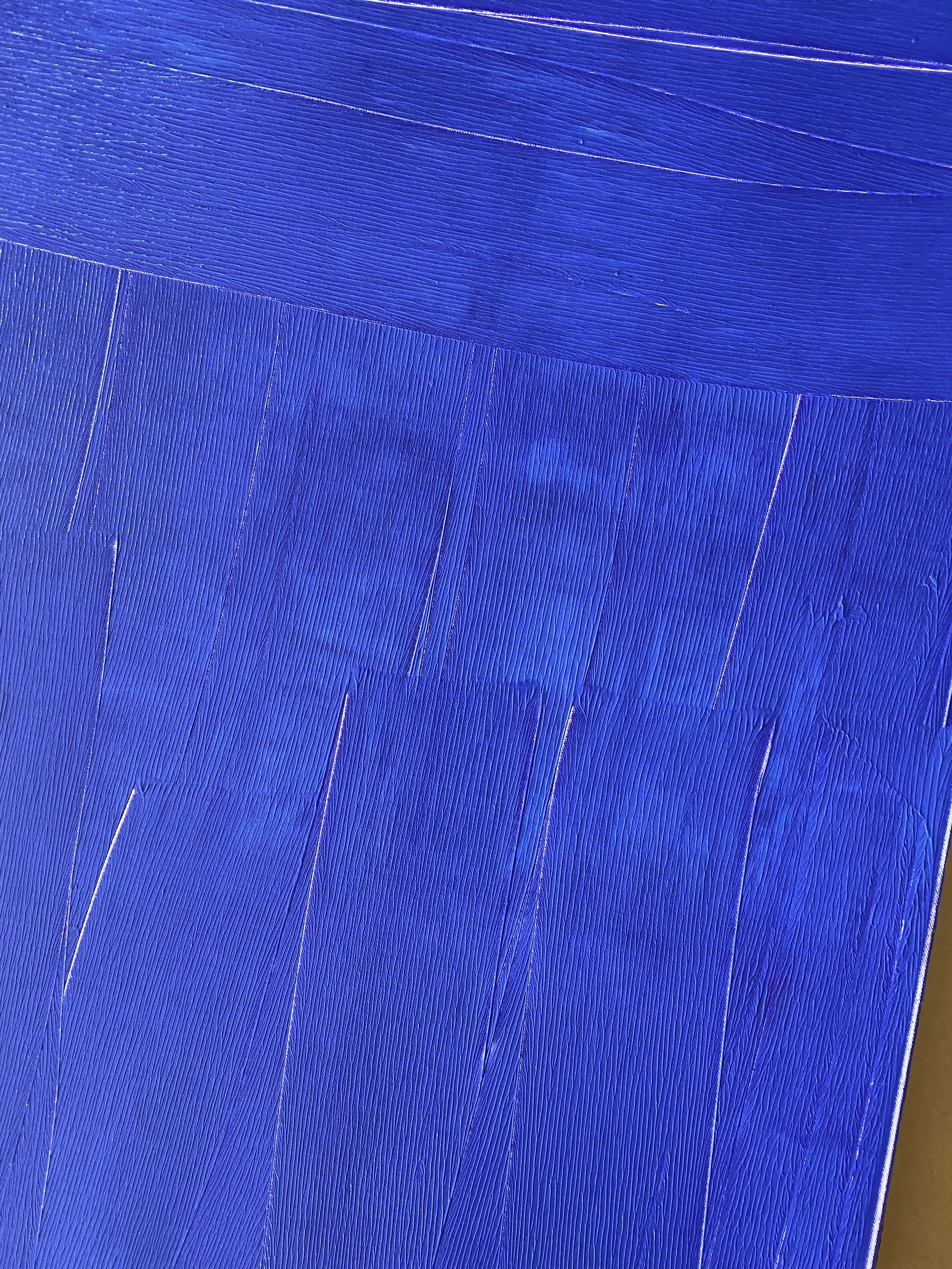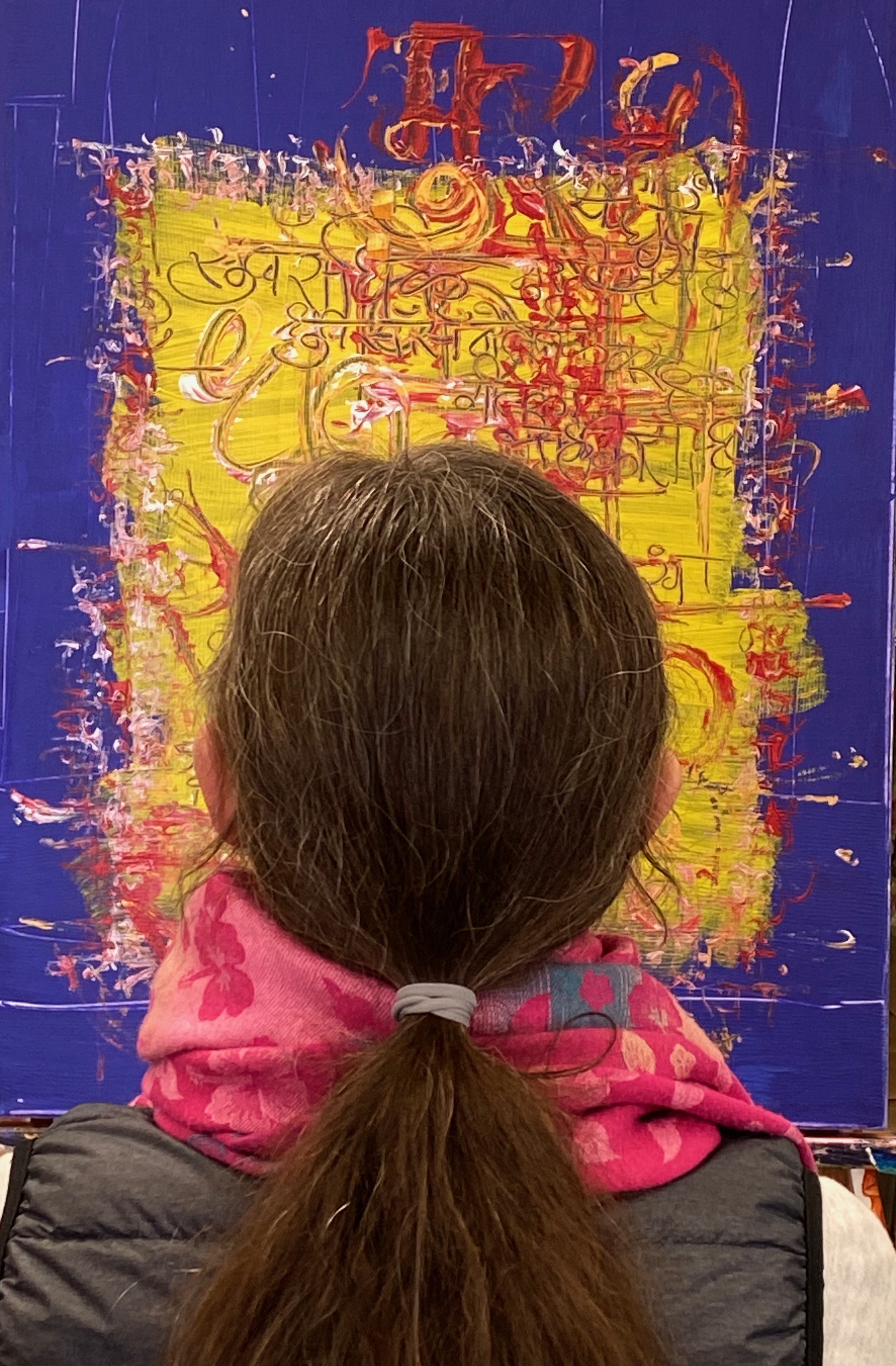Follow Your Colors
Since I started to paint in acrylics in 2012, I have been keeping an eye out for how my heritage and culture show up in my art, from scripts and language, to color and mythology.
A student in my Indian Calligraphy & Culture class, in the session where we explored the connections between the Bangla and Tibetan script, Studio Arts, Smithsonian Associates, 2020.
Connecting with the Past
One day at the Studio some years ago where I was waiting to meet a young grafitti artist @itneverendslik, I wondered if I had forgotten how to write one of my native scripts, Devanagari. It had been years since I have moved to the US and I didn’t write it anymore. As I always listened to Hindi movie songs from my phone however, I picked up a pencil and started to write, in real time, as the singer sang. It was what I used to do in the old days when I took down lyrics of songs playing on the radio–in the time before there were CDs or mp3s or lyric videos. I found that I still remembered how to write it, and it was a relief!
I then started to explore Devanagari calligraphy again in new and expressive ways working in new kinds of media. Thanks to new people, new places and new ideas, I have gone back to expressing my languages. I have written a poem in Hindi, Summer Camp mein, and the English translation was published in an anthology. I performed it on stage too. I have made art out of the Devanagari and Bangla scripts. I painted a Marathi Ganesh puja aarti on canvas and took it for my parents new home. I have also started to teach calligraphy classes and how script connects with India’s history and culture.
Rohith, bottom left on the event flyer.
Connecting with a Song
Last November I curated a 4-day Diwali program at the Kennedy Center in Washington D.C. where, on day 3 of the festival Celebrating Light & Life, I had invited a young Indian-American singer from California, Rohith Jayaraman and his band to perform. Some Studio PAUSE people had attended and we had loved his music and had started following him on Instagram.
This year, one January morning as I checked Instagram, there was a new reel up by Rohith @rohithyourboat. I watched him sing a part of the song Tere Rang from the Hindi movie Atrangi Re. As I watched the reel, I knew from the clip that the song was sung by Krishna, an avatar of the Hindu god Vishnu, and I immediately wanted to paint a big painting in the blue of Krishna’s skin as it was traditionally described. However, I had never mixed that color before to make a painting, let alone a big painting. I also knew Krishna is often depicted wearing yellow so that would be my second color. The colors swirled in me as I listened to the song and, as Rohith sang, I painted.
I replied to Rohith’s post writing, “I am inspired to paint this! I especially love how gentle you are with the word “Radhike” in one part, and it speaks to me, how he encourages her gently to follow her colors… wow.”
From my Instagram @sushmita_artist_writer, Jan 12: When you work all morning and finally get to the right blue, just as you imagined Krishna’s skin to be!! But then you wait to see what happens next as you know acrylics dry darker…
Following My Colors
In my Color Stories Journal class I teach about a color or two in each session, sharing stories connected to the color–from my life and from across the globe and across time. On the “Blue” day I shared how the Hindu god Vishnu and his avatars appear with the specific blue colored skin. Rama is this blue to show that he is visibly divine–his color is the blue of the sacred lotus. But isn’t Krishna darker? Like the blue-black rain clouds? That’s what I seem to remember…
My studio filled with the song playing endlessly on a loop as I wrote the lyrics in an expressive way using the Devanagari script.
Screen shot of Rohith’s Instagram Story where he is singing
Jan 12: Krishna is blue and wears yellow.
@rohithyourboat in his reel singing Tere Rang (meaning Your Colors) wears a red hoodie with Shakti written on it. Shakti is the name for the great goddess. I am named after the great goddess Durga, who wears red and whose face, at least in my Bengali tradition, is yellow. So yellow is common to both Krishna and Durga.
Then the colors for my painting were clear! 😂
I added in some orange because Radha often wore orange in the paintings I had seen of Krishna Leela. I was full of joy as I left the studio but the next day when I returned, I was dismayed as the acrylics had dried–not darker as I had hoped but the blue looked more purple. This was not what I imagined Krishna’s color to be. I decided to let it be because I really liked the colors this way. Purple was one of my favorite colors. Maybe another time I will try making the blue again…
I love photographing my work when the paintings are wet. And I love the textures created from writing!
When my friend @marylouisemarino saw the painting and texted me hearts in those colors I realized that they were the primary colors in color (pigment) theory! The lyrics are so amazing it will be another post. I’m translating…
My friend, mentor, and artist Mary Louise Marino visited the Studio to see the painting.
Connecting with Friends
Jan 17: sushmita_artist_writer
So amazing what @marylouisemarino sees in my painting! (She has been a mentor helping me express with my calligraphic mark-making.) Having enjoyed the Reel of @rohithyourboat she sees this as a visual of the gestures of the singer and the visual of the sounds he sings. Big expressive sounds, regular sounds, raw sounds… (she doesn’t know Hindi but was at Rohith’s show at the Kennedy Center in November 2021)
In the video she saw his hands making sounds visible, just like my hands made them visible on canvas!
And the layers of paint like the layers of emotions, scraping, carving, adding on, and exposing something underneath…
@carsonh3363 saw it right away as a dance on the canvas.
@kate_spritz loved the orange I added in!
Wow #somuchmorethanart I love the @studiopausecommunity and so happy when they share #artstoriescommunity
#colors #expressivemarkmaking #dance #tererang #paint
@marylouisemarino: to just sit in front of your paintings... and listen. and see. and feel...
An Exhibition
Recently, I submitted this painting, which I titled Murali Ki Yeh Dhun/The Melody of the Flute to a show called Creative Confluence: South Asian Community Reflections, Connections, and Dialogue 2022 at the Asian Arts & Culture Center, Towson University, MD. And it was accepted! The guest curator, Nikita Yogiraj, wrote to ask if there was any more info about this specific piece that I would like to share on top of your submission, which will help her in creating a label for this piece.
And that is when I decided to document the story of this artwork. I decided to post it on my blog before the reception, which is on Wed Sept 14, 2022. Do join us if you are free. Some artists might not care to describe how or why they create something but being a writer and storyteller as well, and not to forget my 23 years as a docent interpreting art in an Asian Art museum, it comes naturally to me.






